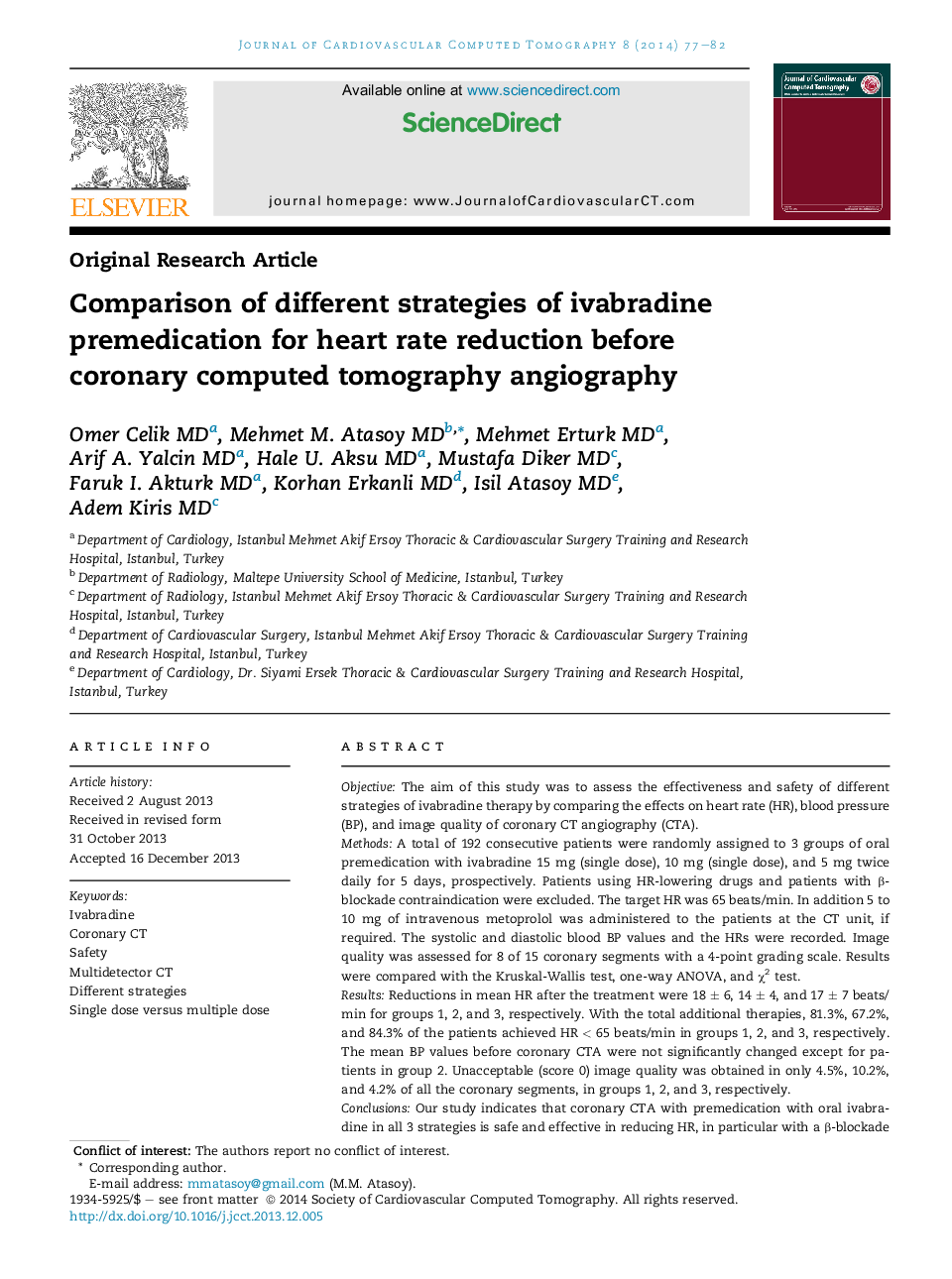| Article ID | Journal | Published Year | Pages | File Type |
|---|---|---|---|---|
| 2964662 | Journal of Cardiovascular Computed Tomography | 2014 | 6 Pages |
ObjectiveThe aim of this study was to assess the effectiveness and safety of different strategies of ivabradine therapy by comparing the effects on heart rate (HR), blood pressure (BP), and image quality of coronary CT angiography (CTA).MethodsA total of 192 consecutive patients were randomly assigned to 3 groups of oral premedication with ivabradine 15 mg (single dose), 10 mg (single dose), and 5 mg twice daily for 5 days, prospectively. Patients using HR-lowering drugs and patients with β-blockade contraindication were excluded. The target HR was 65 beats/min. In addition 5 to 10 mg of intravenous metoprolol was administered to the patients at the CT unit, if required. The systolic and diastolic blood BP values and the HRs were recorded. Image quality was assessed for 8 of 15 coronary segments with a 4-point grading scale. Results were compared with the Kruskal-Wallis test, one-way ANOVA, and χ2 test.ResultsReductions in mean HR after the treatment were 18 ± 6, 14 ± 4, and 17 ± 7 beats/min for groups 1, 2, and 3, respectively. With the total additional therapies, 81.3%, 67.2%, and 84.3% of the patients achieved HR < 65 beats/min in groups 1, 2, and 3, respectively. The mean BP values before coronary CTA were not significantly changed except for patients in group 2. Unacceptable (score 0) image quality was obtained in only 4.5%, 10.2%, and 4.2% of all the coronary segments, in groups 1, 2, and 3, respectively.ConclusionsOur study indicates that coronary CTA with premedication with oral ivabradine in all 3 strategies is safe and effective in reducing HR, in particular with a β-blockade combination. All 3 ivabradine regimes may be an alternative strategy for HR lowering in patients undergoing coronary CTA. Ivabradine 15 mg (single dose) and ivabradine 5 mg twice daily for 5 days are superior to the ivabradine 10-mg single-dose regime for HR lowering without adjunctive intravenous β-blocker usage.
